The award categories for next year’s Pacific Bonsai Expo are set:
- Best in Show
- Best Large Broadleaf Evergreen Bonsai
- Best Large Conifer Bonsai
- Best Large Deciduous Bonsai
- Best Medium Bonsai Display
- Best Shohin Bonsai Display
(You can learn more about sponsoring awards at the Expo here.)
Large bonsai are trees that are over 18″ tall from the lip of the pot to the top of the foliage or branches. Medium bonsai are trees that are over 8″ but less than 18″ tall (jin may extend beyond 18″). Displays featuring trees under 8″ tall are eligible for the shohin award.
The Best in Show trophy will be awarded to the top scoring display in one of the other five categories.
We’re publishing the award criteria to help people prepare displays that fit into the categories they’re aiming for. Towards this end, I’ve included photos and a video that demonstrate each category.
The most straightforward categories are those for large trees. By convention, large displays contain two display elements, a single bonsai and an accent. The accent can be a companion plant, a figure, a stone, or any other object that provides context for viewers.
Although bonsai stands and daiza for accents aren’t required, but we do encourage exhibitors staging novel displays to present their trees artistically.
For the sake of judging, the conifer category includes evergreen conifers like pines, spruce, and junipers. The deciduous category includes deciduous species like maple and elm as well as deciduous conifers like dawn redwood and larch. The broadleaf evergreen category includes flat-leaved trees that retain their leaves in winter like oaks, azaleas, and olives, plus tropical common species like ficus.

Japanese maple and accent (eligible for the Large Deciduous Bonsai Award)
Medium displays are any displays where at least one tree is taller than 8″ and all trees are under 18″ tall. By convention, medium trees are shown in three-point displays with a main tree, a secondary tree, and an accent.
As in the large category, we don’t require that exhibitors follow this convention.
The display below features a clump-style chojubai, a multi-trunk satsuki azalea that’s between 8″ – 18″ tall, and an accent plant.
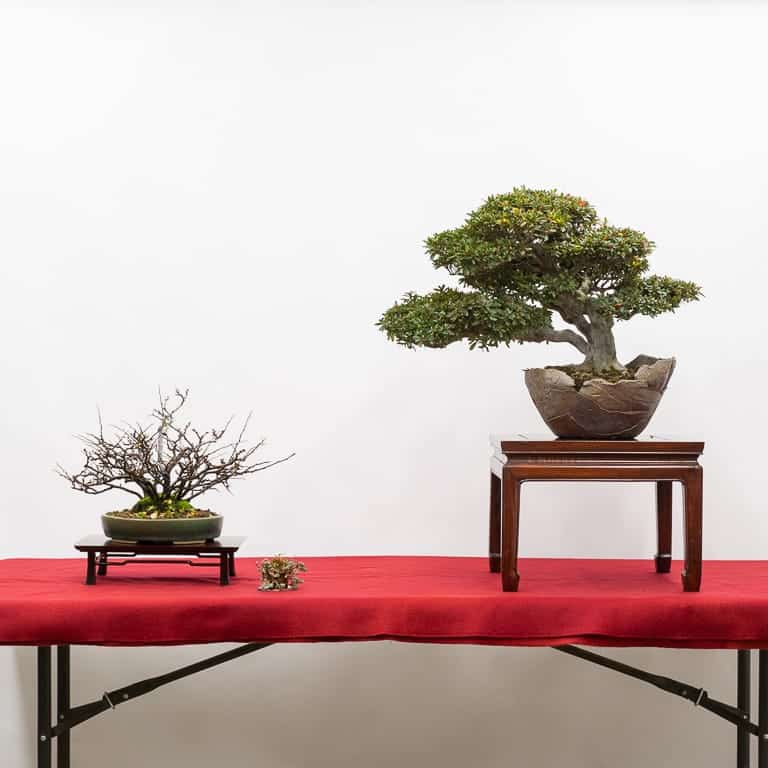
Chojubai and satsuki azalea ‘Kinsai’ (eligible for the Best Medium Bonsai Display award)
Medium displays may feature a single bonsai as in the example below.
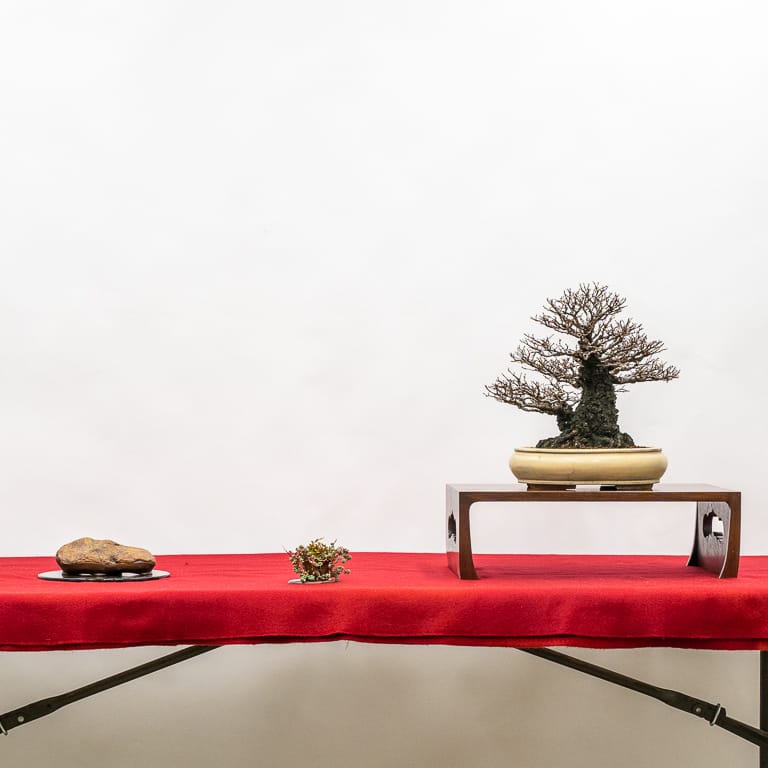
Corkbark elm and suiseki (eligible for the Best Medium Bonsai Display award)
For a slightly fuller-looking display, the stone can be swapped out for a small bonsai.
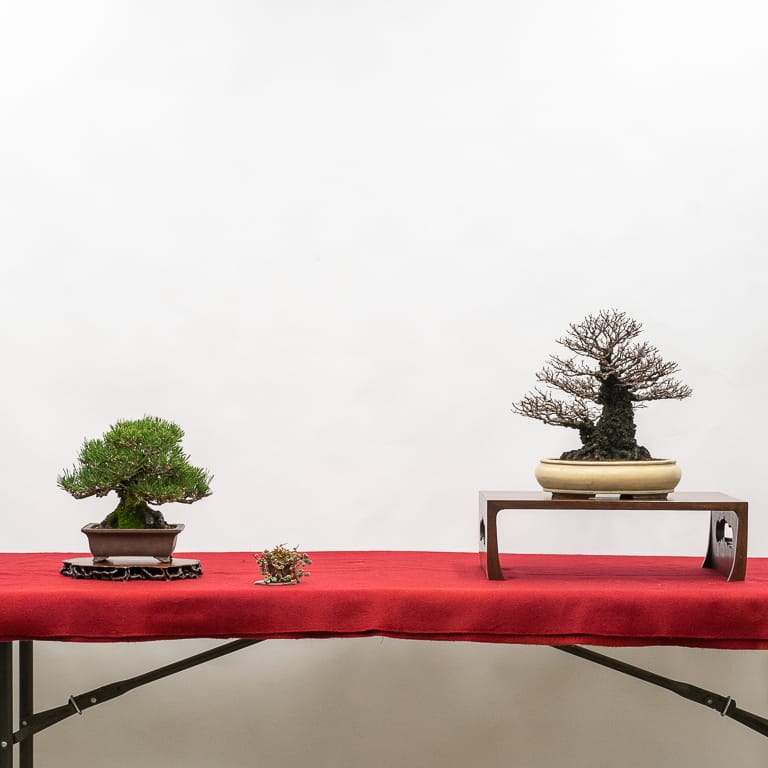
Black pine and corkbark elm (eligible for the Best Medium Bonsai Display award)
Although we expect shohin bonsai to be included in some medium displays, these trees are not eligible for the Best Shohin Bonsai Display award. This is because judges’ scores apply to complete displays rather than to individual trees.
For example, the display below features two trees that are under 8″ tall. The entire composition – trees, pots, stands, and accent – will be evaluated together.
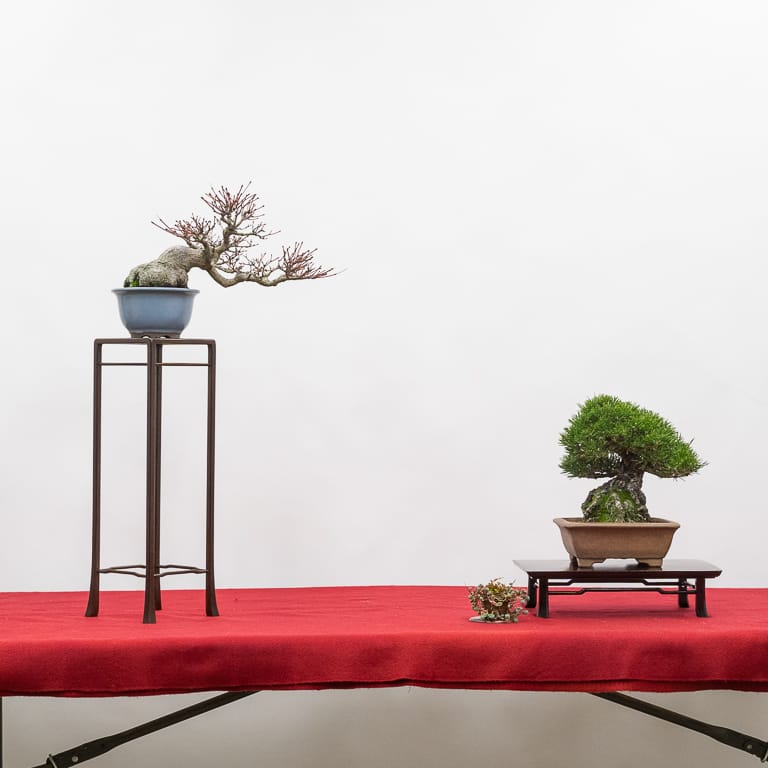
Japanese maple and black pine (eligible for Best Shohin Bonsai Display award)
By convention, shohin bonsai displays contain anywhere between one tree and five trees. There are no requirements as to how shohin displays are constructed. Each display element may have its own stand as in the example above, or they can share a common stand like in the example below.
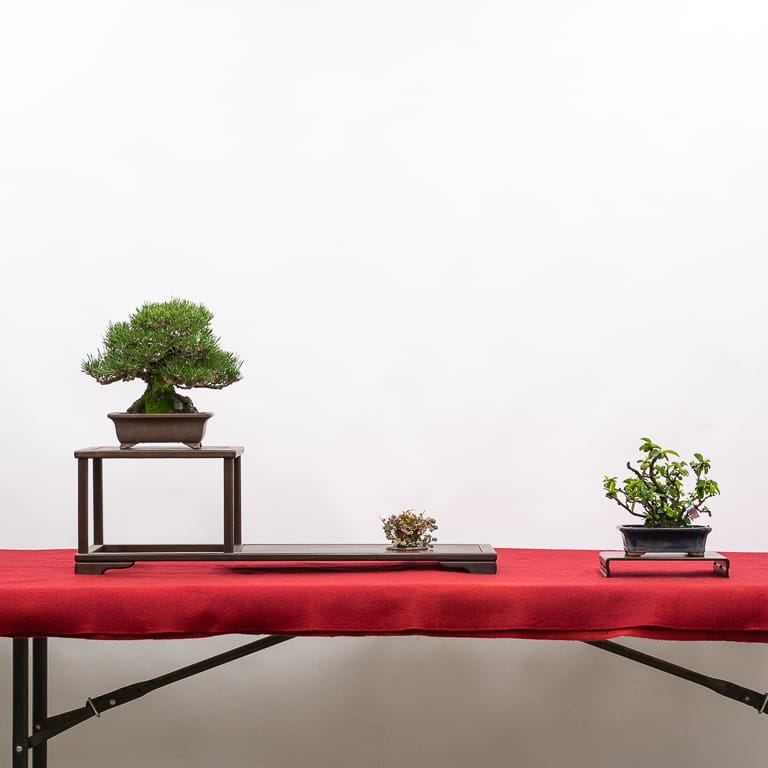
Black pine and flowering quince (eligible for the Best Shohin Bonsai Display award)
For ideas about how to display shohin, check out the following posts from Japan’s premier shohin bonsai exhibition, Gafu-ten:
- Shohin judging categories at Gafu-ten
- Combining elements to balance shohin displays
- Alternatives to shohin box displays
For a video discussion of the topic using the sample displays above, see the following video in which co-sponsor Eric Schrader and I run through the award categories.
Have questions of comments about displays at the Pacific Bonsai Expo? Feel free to leave them in the comments below!
Subscribe to Indian Bonsai Art
New Posts Delivered Every Tuesday and Friday
